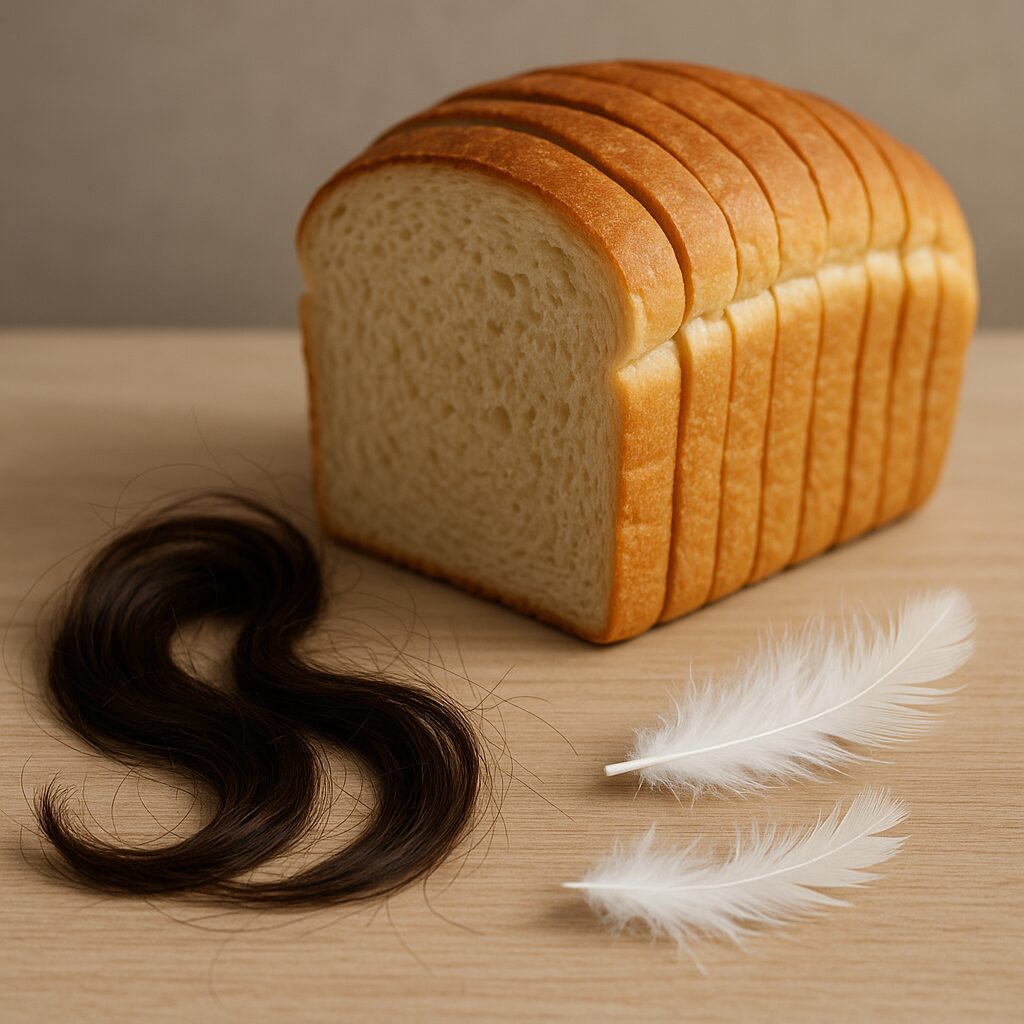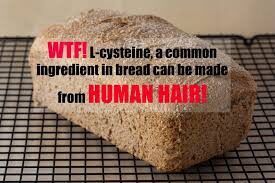Nothing Says ‘Fresh Bread’ Like a Side of Human Hair and Duck Feathers
Jamaica Live | Health & Consumer Watch
An eye-opening ingredient in many commercial bread products sold across the United States has sparked concern among health-conscious consumers and food safety advocates. The substance in question? L-Cysteine — a dough conditioner that can be derived from human hair, duck feathers, or even hog bristles.

This amino acid is legally used by many major food manufacturers to improve the texture, elasticity, and shelf life of mass-produced breads and baked goods. But the origins of L-Cysteine — especially when extracted from human hair gathered from barbershops and salons in countries like China — have prompted alarm among some consumers.
What Is L-Cysteine?
L-Cysteine is a naturally occurring amino acid. In food production, it functions as a dough softener, helping to create smoother, more pliable bread doughs. This makes it a favored ingredient in fast-food buns, supermarket sandwich loaves, and other commercial bakery items.
Where Does It Come From?
Traditionally, L-Cysteine has been extracted from:
- Human hair — often sourced from hair salons and barbershops, particularly in China.
- Duck feathers — another common protein-rich source.
- Hog hair or bristles — used less frequently but still within industry practices.
The process involves breaking down the raw material with acid, then purifying the resulting chemical compound. Once fully sterilized and processed, the L-Cysteine is added to commercial bread recipes.
🧪 Step-by-Step Processing of Human Hair & Duck Feathers into L-Cysteine
1. Collection
- Human Hair: Often sourced from barbershops and salons, primarily in China and parts of Asia.
- Duck Feathers / Hog Hair: Collected from slaughterhouses or poultry processing plants as byproducts.
2. Cleaning & Sorting
- The raw materials are cleaned thoroughly to remove dirt, oils, and contaminants.
- Hair and feathers are sorted based on quality and suitability for chemical processing.
- Cleaning and Preparation:Hair is washed, sometimes bleached and dyed, and may be processed to create different textures (straight, wavy, curly).
3. Hydrolysis (Breaking Down the Proteins)
- The cleaned hair/feathers are dissolved in strong hydrochloric acid (HCl) or other acidic solutions.
- This process breaks down keratin, the main protein in hair and feathers, into its amino acid components.
- L-Cysteine is one of those amino acids, and it is separated from the rest.
4. Filtration & Isolation
- The resulting solution is filtered to remove any solid residues.
- L-Cysteine is isolated using crystallization or other purification methods.
5. Neutralization & Sterilization
- The isolated L-Cysteine is neutralized, often using a base like sodium hydroxide.
- It’s then sterilized to remove any bacteria or pathogens.
6. Drying & Packaging
- Finally, the purified L-Cysteine is dried into a powder and packaged for food or pharmaceutical use.
Human Hair Processing (for Hair Products):
- Sorting and Grading:Human hair, often sourced from salons and barber shops, is sorted by length, texture, and color.
Concerns about human hair in food:
- Some consumers are concerned about the use of human hair (or derivatives) in food products, particularly bread, due to its origins.
- While L-cysteine from hair is considered safe by regulatory bodies, some find the concept unsettling.

Is It Safe?
According to the U.S. Food and Drug Administration (FDA), L-Cysteine is “generally recognized as safe” (GRAS) for human consumption. However, the agency does not require manufacturers to disclose the source of the compound on product labels — a detail that has drawn criticism from food transparency advocates.
While there are no known direct health risks linked to L-Cysteine from these sources, the idea of consuming bread containing components derived from human hair or feathers is unpalatable to many.
How to Avoid It
Consumers seeking to avoid L-Cysteine — especially if they have ethical, religious, or dietary concerns — are advised to:
- Look for bread labeled “vegan,” “kosher,” or “halal”, which typically prohibits the use of animal or human-derived ingredients.
- Check ingredient labels for terms like “L-Cysteine,” “dough conditioner,” or “E920.”
- Support brands that use synthetic or plant-based alternatives, which are becoming more widely available.
A Call for Transparency
This revelation has reignited calls for greater food labeling transparency and consumer education. While Jamaican bread brands do not typically use L-Cysteine, awareness is critical, especially as more U.S.-produced food items find their way into Caribbean markets.
As global food systems become more complex, Jamaican consumers — like many worldwide — are demanding to know not just what is in their food, but where it comes from.
For now, that seemingly harmless slice of sandwich bread might come with more than just wheat and water — it may carry a trace of hair, feather, or hog.
🧾 Did You Know?
L-Cysteine is also used in some flavor enhancers, meat products, and pharmaceuticals. It’s often labeled as E920 in European markets.
